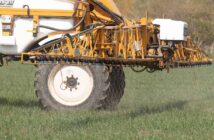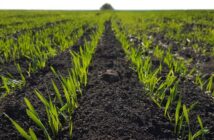Bayer’s CropCheck service is further proof that eyespot is more prevalent this season
The disease is being picked up from a number CropCheck partner farms, confirming initial observations from the field. CropCheck qPCR testing is finding a fairly even split in W and R types but DNA/mg scores are higher for the W type.
Bayer’s Greg Hanna isn’t surprised by CropCheck results. “This season growers took advantage of fine autumn weather, and a good part of the wheat area was drilled a little ahead of what we normally see. January, February and March have all been exceptionally mild, and coupled with a lack of varietal resilience it is no wonder we are finding the disease more easily this season,” he notes.
CropCheck results include Skyfall (7) at Hay Farming, Holbeach St Marks, Lincoln. Skyfall is understood to carry the Pch1 resistance gene. Interestingly, testing has revealed the presence of both the W and R strains. However, it is a second cereal, a key risk factor.
Varietal resistance is important
Less visible, the R type can be overlooked and it has the same yield damaging properties of the W strain warns Mr Hanna. “Eyespot is a disease that basically strangles the crop, restricting the flow of nutrients and water. It also increases the lodging risk, and this is particularly damaging,” he cautions.
Mr Hanna agrees with Ben Lowe that a robust dose of prothioconazole is a sensible precaution for T1 sprays. “Prothioconazole is effective against both strains and also a good yellow rust protectant. For those wanting Septoria protection with broad-spectrum disease activity there isn’t a better option than Ascra,” he concludes.




